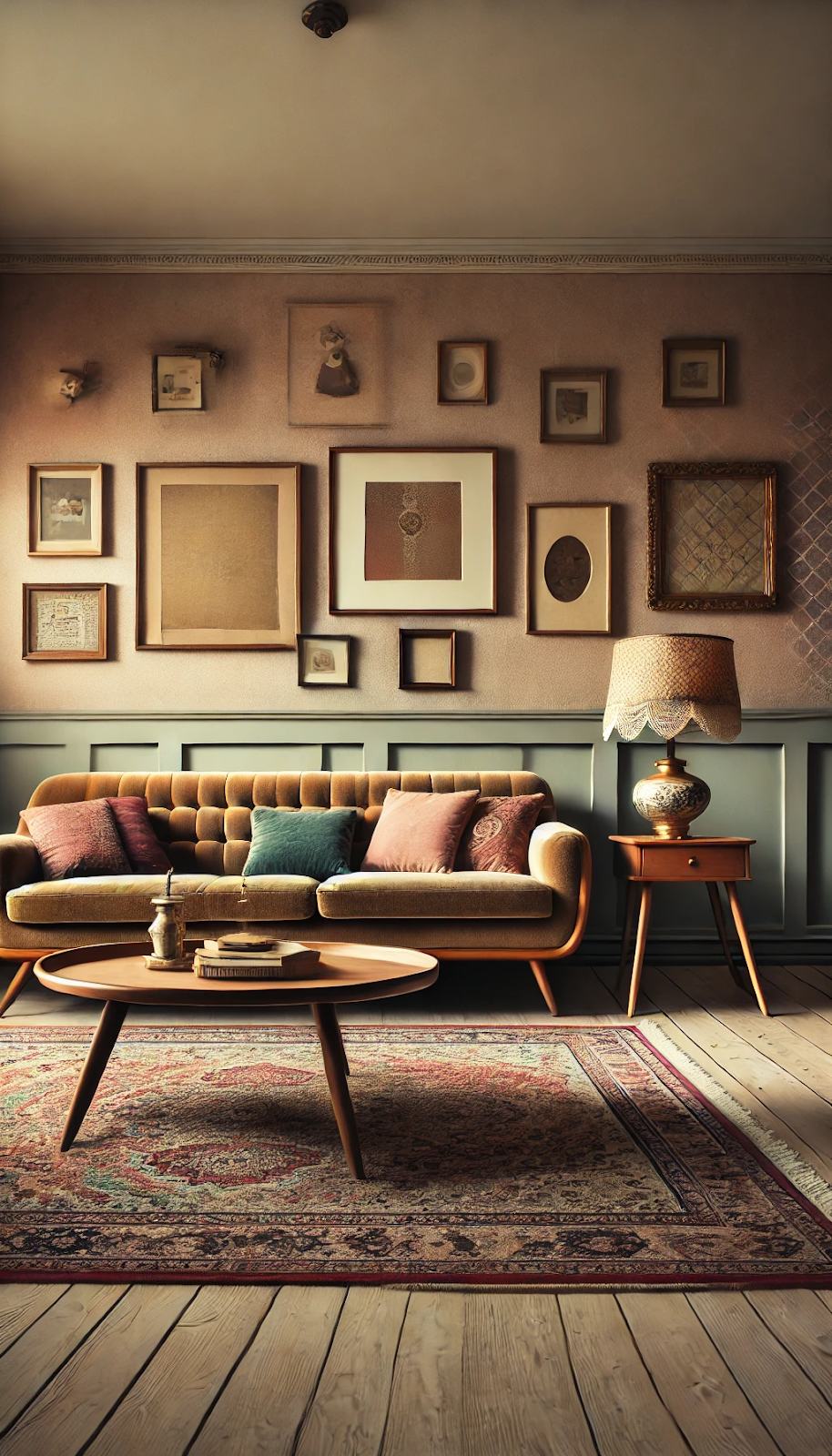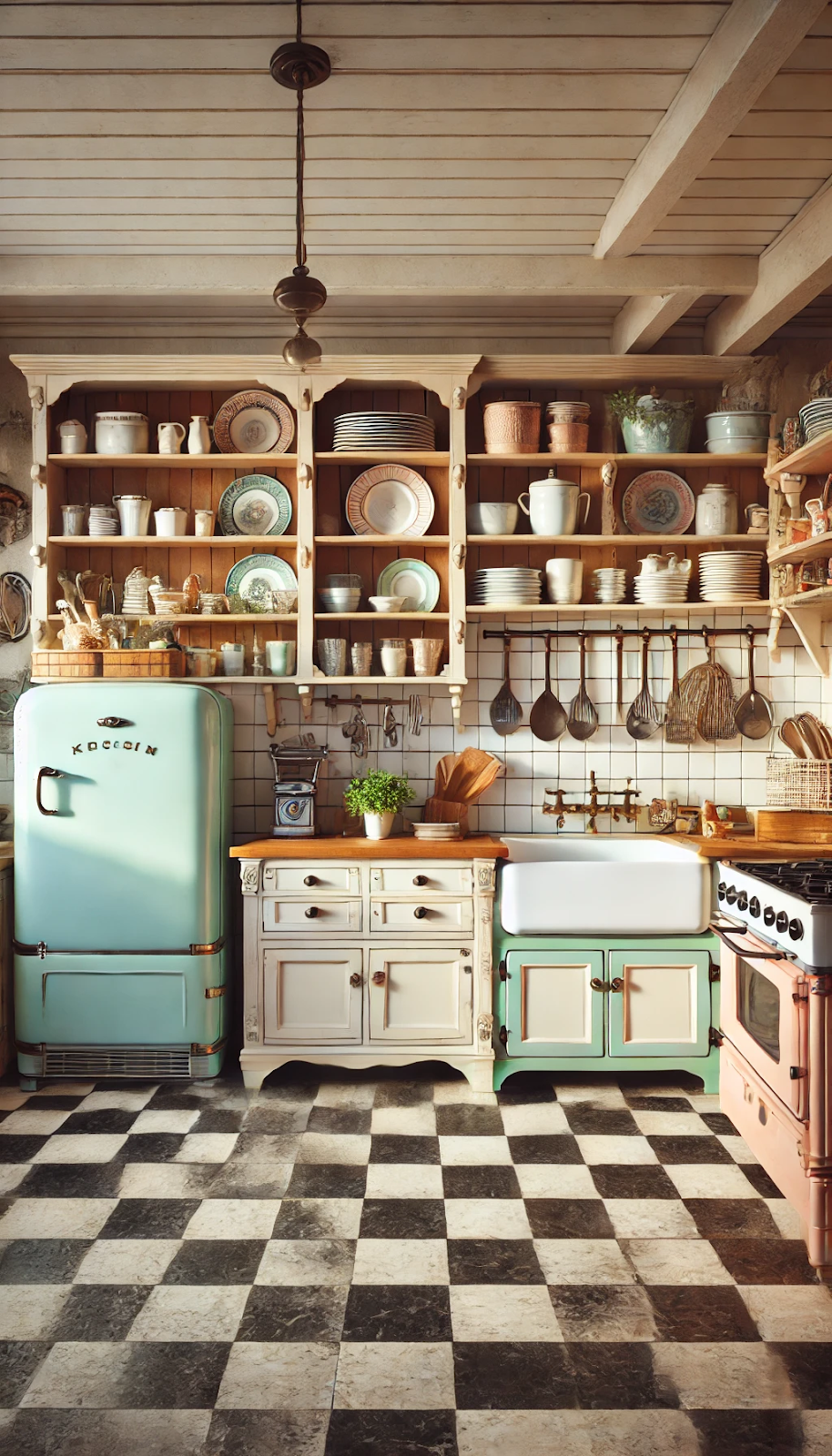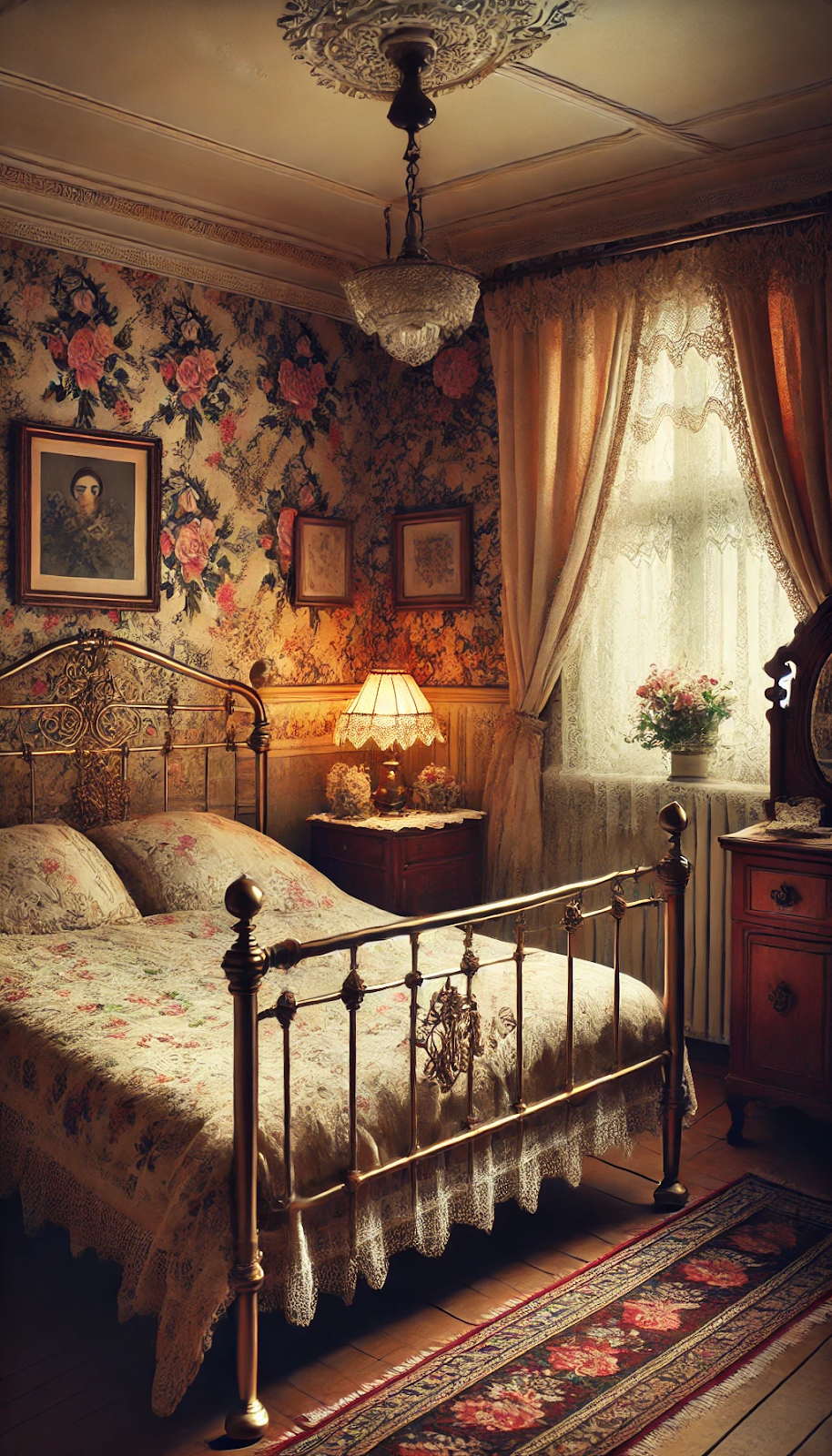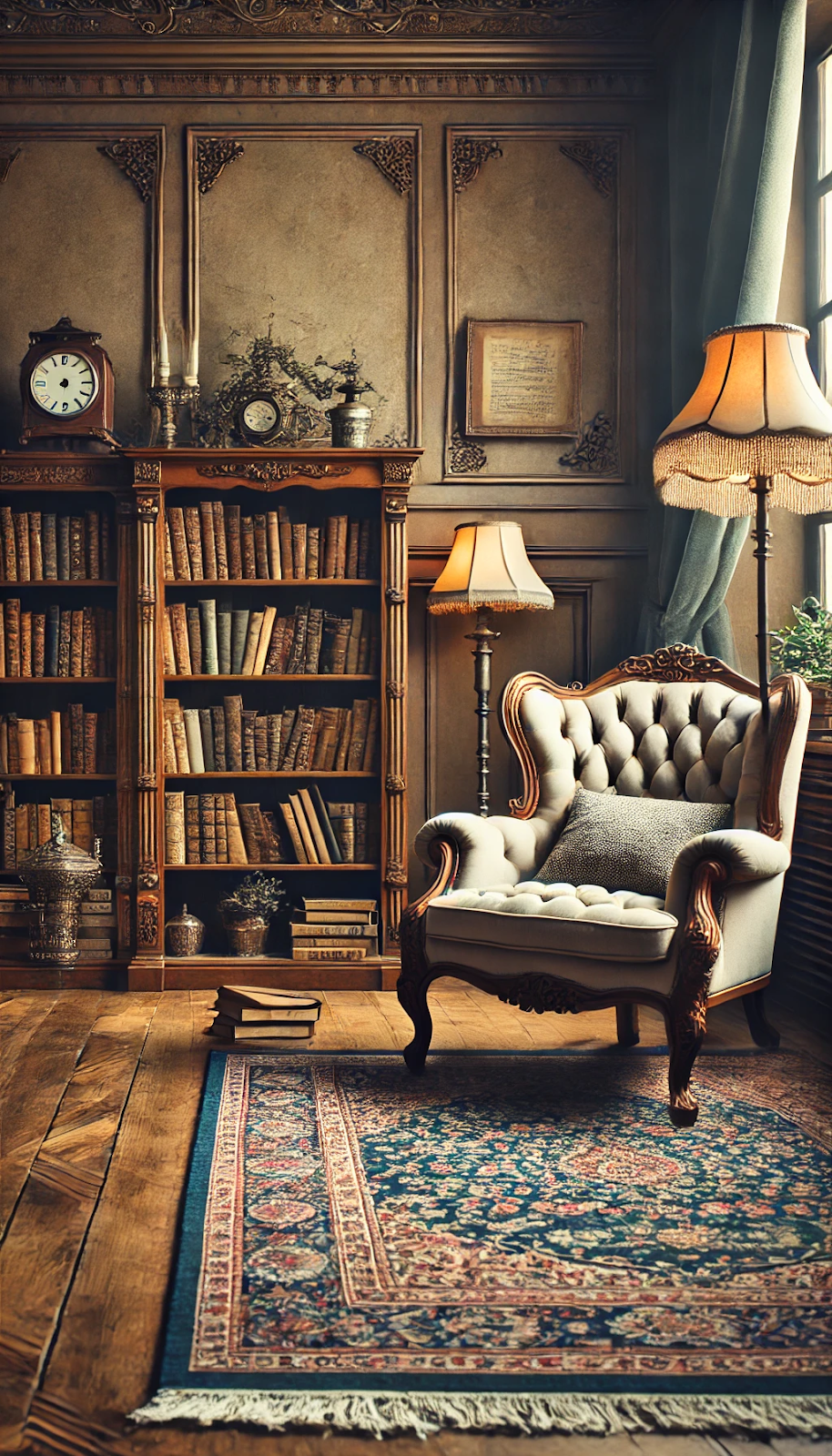Introduction
Vintage home decor has a charm that never fades. Whether it’s a beautifully aged wooden cabinet, a retro lamp, or an old-school patterned wallpaper, vintage style brings warmth, nostalgia, and character to any home. But how has vintage decor evolved over the years? And how can you incorporate this timeless style into your space without making it look outdated? Let’s dive in!
What Defines Vintage Style in Home Interiors?
Vintage decor typically includes furniture, color palettes, and accessories that reflect past decades. The term “vintage” generally refers to styles from the 1920s to the 1980s, although the definition can be flexible. Unlike antique furniture (which is usually over 100 years old), vintage pieces add a sense of history while still being practical for modern living.
Some key features of vintage style include:
- Classic wooden furniture with detailed carvings
- Retro wallpapers with floral or geometric patterns
- Elegant lighting fixtures like chandeliers or Tiffany lamps
- Vintage textiles like lace curtains and embroidered cushions
- Mixing old and new for a balanced aesthetic
The Evolution of Vintage Decor Over the Years
Vintage decor has seen many changes over the decades. What was once considered old-fashioned is now making a comeback with a modern twist. Let’s take a closer look at how vintage decor has transformed.
1920s-1930s: The Art Deco Era

During the roaring 1920s and early 1930s, Art Deco was the dominant style. Homes featured bold geometric patterns, shiny metallic accents, and luxurious fabrics like velvet and silk. The use of lacquered wood, gold details, and mirror panels gave interiors a sophisticated, glamorous feel.
Incorporating Art Deco Today:
- Use furniture with geometric designs.
- Add metallic gold or silver accessories.
- Choose deep jewel tones like emerald green or royal blue.
1940s-1950s: Mid-Century Modern Takes Over

The post-war period saw the rise of mid-century modern design. This era was all about clean lines, functional furniture, and organic shapes. Think of Eames chairs, teak wood sideboards, and pastel kitchens.
Incorporating Mid-Century Modern Today:
- Opt for sleek, wooden furniture with tapered legs.
- Use pastel colors or earthy tones.
- Decorate with sunburst mirrors or vintage clocks.
1960s-1970s: Bohemian and Eclectic Vibes

The 1960s and 70s embraced bold colors, psychedelic prints, and a mix of global influences. Rattan furniture, macramé wall hangings, and lava lamps became trendy. It was a time of self-expression, and interiors reflected individuality.
Incorporating 60s and 70s Vibes Today:
- Hang macramé or woven wall art.
- Mix and match different textures and patterns.
- Bring in plants and natural elements for a cozy feel.
1980s-1990s: Nostalgia and Maximalism
The 80s and 90s saw a mix of influences, from neon colors and floral chintz fabrics to glossy furniture and oversized furniture pieces. This was a time when minimalism was out, and more was definitely more.
Incorporating 80s and 90s Style Today:
- Choose bold floral prints for cushions or wallpaper.
- Incorporate brass and glass furniture.
- Add a pop of color with neon or pastel accessories.
How to Incorporate Vintage Style in Your Home
You don’t need to live in a historic house to embrace vintage decor. Even a modern apartment can benefit from vintage charm if you mix old and new thoughtfully. Here are some tips:
1. Start with One Statement Piece
A vintage-style armchair, a classic wooden dresser, or an antique mirror can serve as the focal point of your space. Build your decor around it rather than filling the room with too many vintage elements.
2. Mix Old with New

To avoid a home that looks like a museum, balance vintage with modern pieces. Pair a vintage wooden table with contemporary chairs or mix a retro couch with minimalist decor.
3. Use Vintage Accessories
Not ready to commit to large vintage furniture? Start small with vintage-inspired accessories like:
- Old-school telephones
- Antique picture frames
- Retro kitchen appliances like a 50s-style toaster
4. Embrace Vintage Textures and Fabrics
Lace curtains, embroidered cushions, and velvet upholstery instantly bring a vintage feel to any room. Mix different textures to add depth and coziness.
5. Choose a Soft, Muted Color Palette
Vintage interiors often use soft, muted tones like beige, olive green, dusty pink, and mustard yellow. These colors create a timeless and elegant look.
6. Shop Second-Hand and Upcycle
Thrift stores, flea markets, and online marketplaces are goldmines for vintage finds. You can also repurpose old furniture by painting or refinishing it.
FAQs About Vintage Decor
Q1: Is vintage decor expensive?
Not necessarily! While some antique pieces can be pricey, you can find budget-friendly vintage items at thrift stores, estate sales, and online marketplaces. DIY projects like repainting old furniture can also help you achieve a vintage look without spending much.
Q2: Can vintage decor work in a small space?
Absolutely! Choose smaller vintage pieces, such as a decorative lamp, a vintage rug, or a framed retro print. Light-colored walls and mirrors can help make a small space feel airy and open while still embracing vintage charm.
Q3: What’s the difference between vintage and retro?
Vintage refers to actual old items from past decades, while retro refers to new items designed to look like they are from the past. A 1960s wooden radio is vintage, while a newly made radio that mimics the 60s style is retro.
Q4: Can I mix vintage styles from different decades?
Yes! Mixing styles can create a more unique and personalized look. For example, you can pair an Art Deco-inspired mirror with mid-century modern furniture for a balanced blend of old-world charm and sleek functionality.
Q5: How do I keep vintage decor from looking outdated?
Balance is key. Avoid overloading a room with too many vintage items. Instead, mix vintage pieces with contemporary elements to create a stylish, timeless space.
Conclusion
Vintage decor has evolved over the years, but its charm remains timeless. By understanding its history and adapting it to modern interiors, you can create a home that feels warm, stylish, and full of character. Whether you add a retro lamp, a vintage rug, or a repurposed wooden cabinet, vintage style will always bring a sense of nostalgia and beauty to your space.
So, why not start incorporating vintage decor today? Whether you love Art Deco glamour or mid-century simplicity, there’s a vintage style for everyone!
